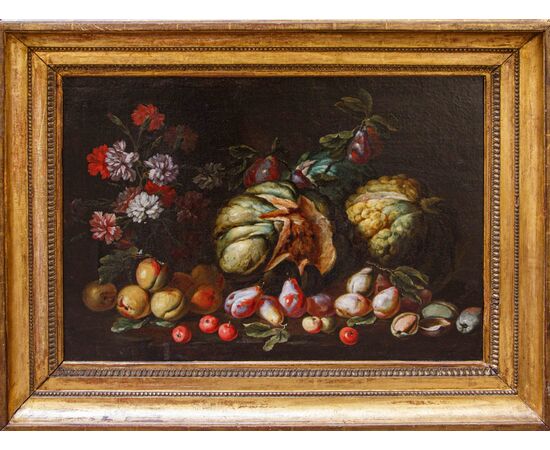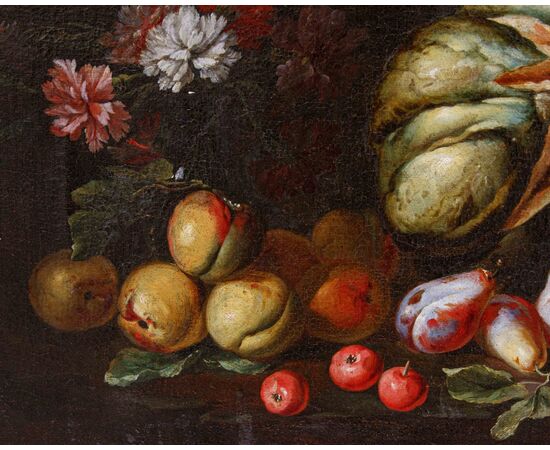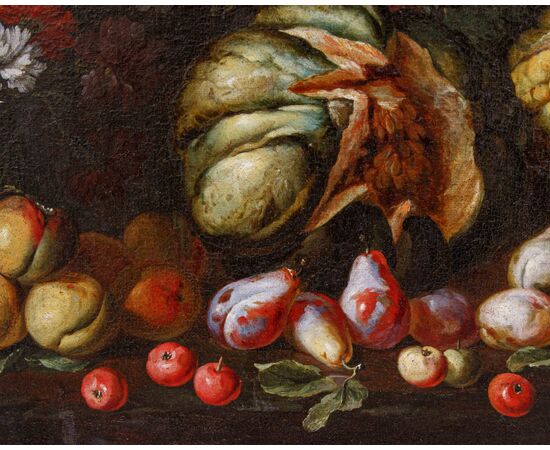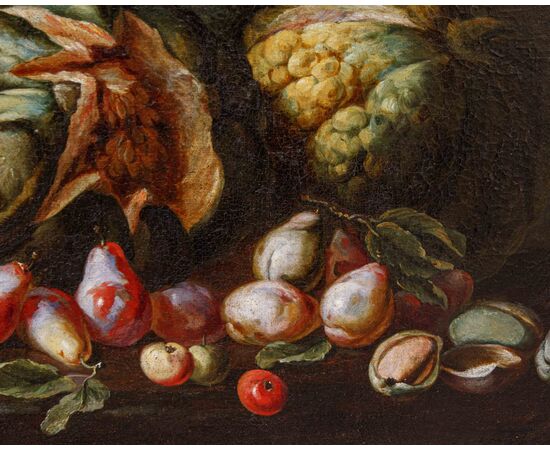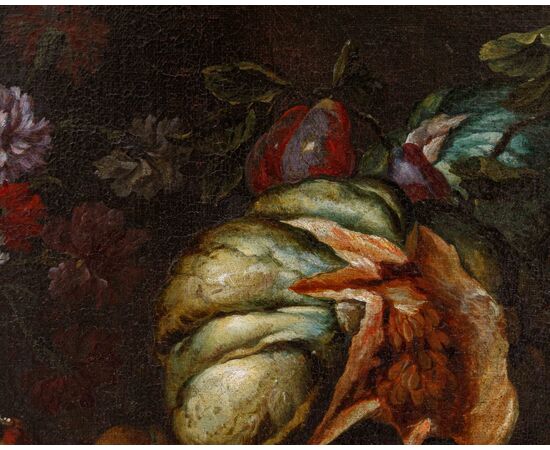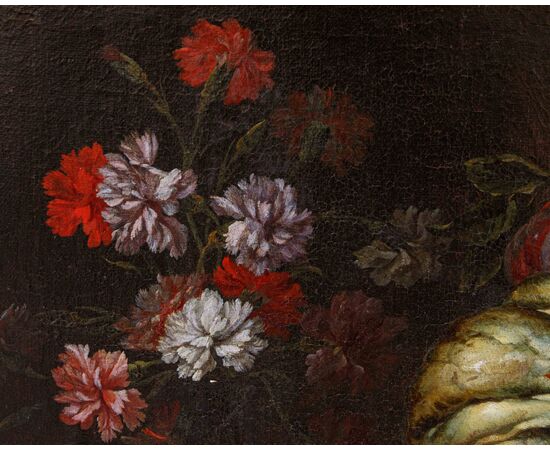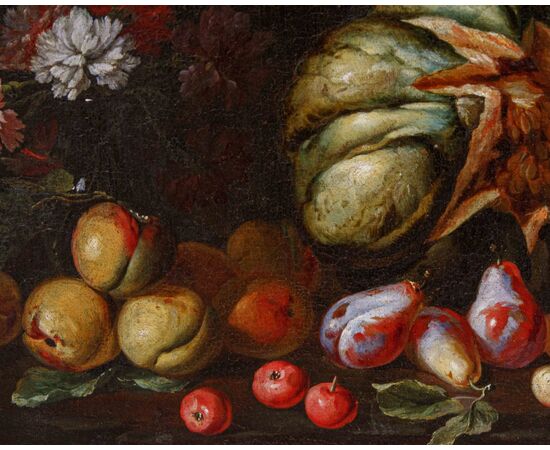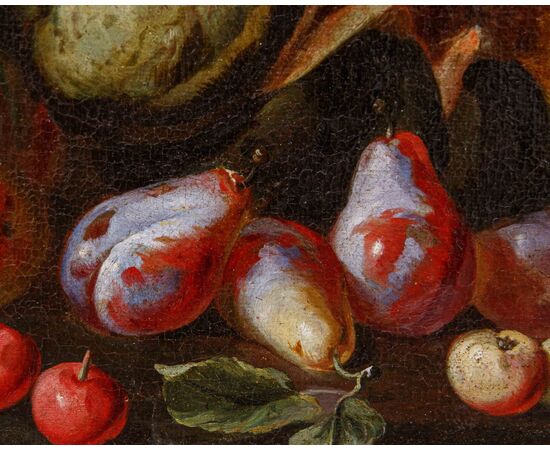Niccolò Stanchi (Rome, 1623 – 1690), Still life with fruit and flowers
Niccolò Stanchi (Rome, 1623 – 1690)
Still life with fruit and flowers
Oil on canvas, 49 x 67 cm
With frame, 67 x 87 cm
Niccolò Stanchi (Rome, 1623 – 1690) was an Italian painter who distinguished himself in the still life genre, an artistic field that underwent a whirlwind process of change and development in the 17th century. His career is inextricably linked to that of his older brothers, Giovanni (1608 – c. 1675) and Angelo (1626 – active until 1673), with whom he shared a renowned Roman workshop specializing in this type of painting. The Stanchi workshop was not just a place of production, but a veritable center of innovation where the individual skills of the brothers merged into choral works. While Giovanni was particularly appreciated for his mastery in painting flowers, Niccolò earned a solid reputation as a skilled decorator. This specialization allowed them to collaborate on multiple projects, creating complex and richly detailed compositions. The synergy between the brothers is a distinguishing feature of their production and sometimes makes it difficult to attribute individual parts of a work to a specific member of the family with certainty. Niccolò Stanchi's works stand out for a bold and often contrasting use of color. This predilection for vibrant and sometimes "discordant" colors reveals a clear connection with the models of Flemish painting, which at the time exerted a considerable influence on Italian art. Many Flemish artists had settled in Rome, bringing with them new techniques and approaches to the representation of nature. The Stanchis, and Niccolò in particular, were able to assimilate these influences, reworking them with a personal and recognizable style. Stanchi's still lifes are often characterized by opulent floral compositions, placed in elegantly decorated vases. Often, these bouquets are joined by elements of fruit, carefully arranged to enrich the scene and add a touch of realism. This attention to detail and the ability to render the texture and brilliance of petals and fruits were among his greatest qualities. Niccolò Stanchi's works have been of interest in the art market for centuries. This testifies not only to the intrinsic value of his creations, but also to his contribution to the evolution of still life painting in Europe. His artistic production offers a precious insight into the rich and dynamic Roman artistic environment of the seventeenth century, an era in which art flourished under the patronage of noble families and the Church. Niccolò Stanchi, although perhaps less known than other giants of the Baroque, was a talented artist whose work helped define the still life genre, leaving a legacy of beauty and chromatic vibrancy that continues to fascinate critics and collectors. Stanchi did not limit himself to collaborating with the brilliant members of his family workshop, working alongside eminent representatives of the Roman Baroque, first and foremost Ciro Ferri, with whom he executed the frescoes for the Borghese palace in Rome.
Our painting shows various similarities with some of the most celebrated passages of Stanchi's activity. The rendering of the details of fruit and vegetables is very close to the corpus of the painter's works. The rendering of chiaroscuro echoes the tradition of still life painters of the Roman Baroque, citing the works of Cerquozzi and Verrocchio in a shrewd and extremely personal way. This unprecedented painting constitutes a synthesis of the crucial features of Stanchi's production and a precious addition to his catalogue, in a state of continuous evolution and expansion.
To support the attribution of our painting to Stanchi are the numerous analogies with various works by the master, including the pendant, of slightly larger dimensions, which passed through a Dorotheum auction in Vienna in 2014 and a Still Life of Fruit passed through Sotheby's London in 2024.

